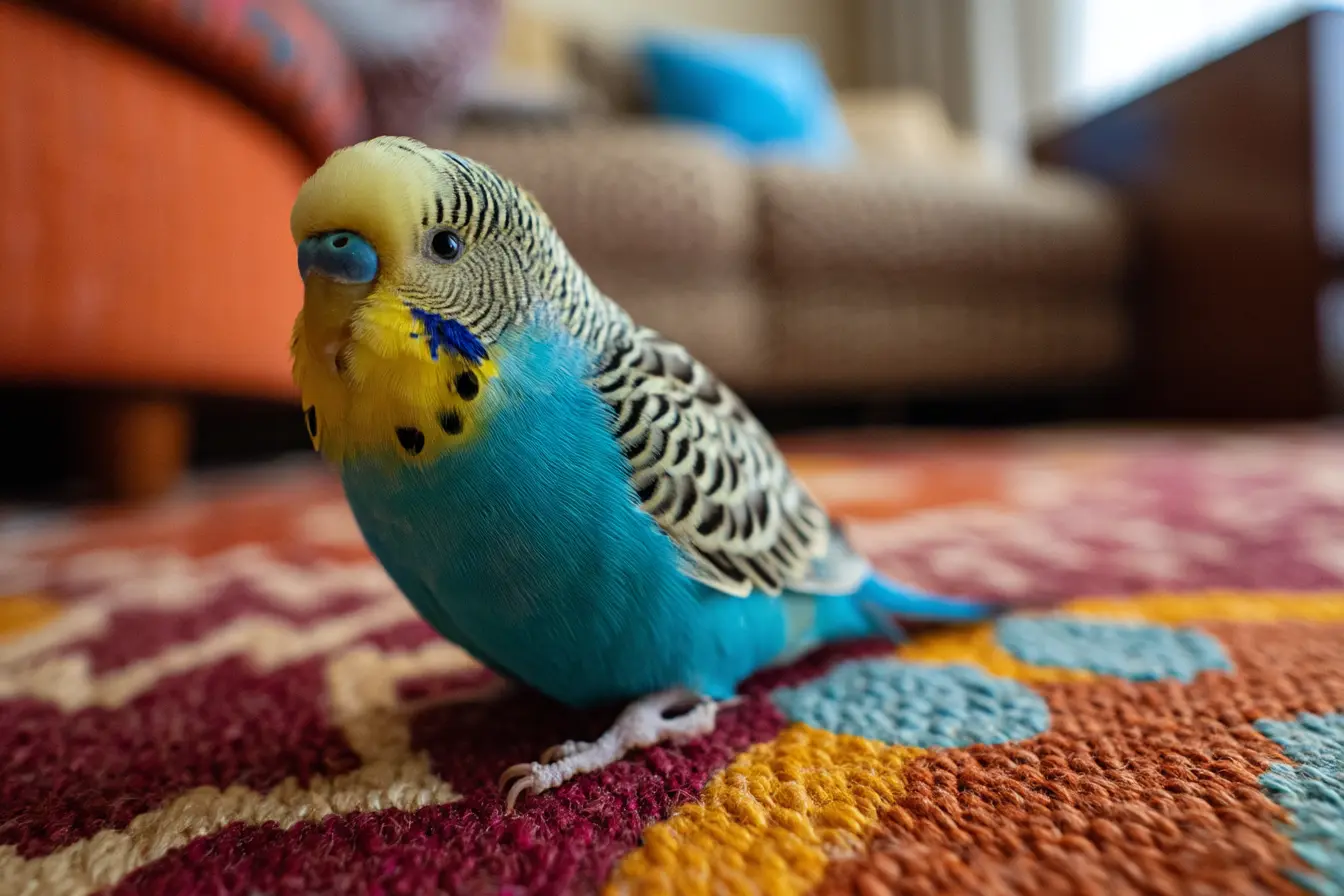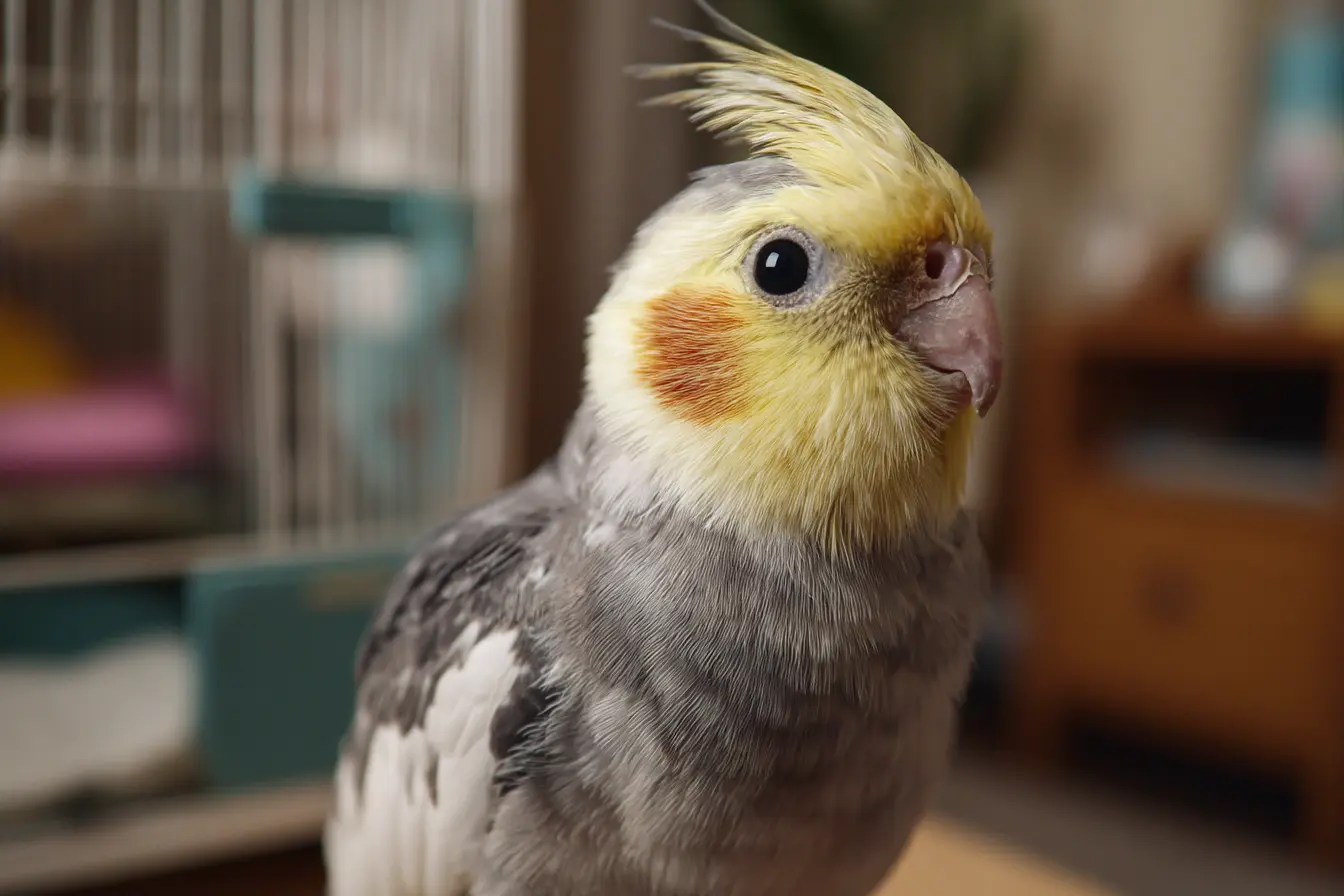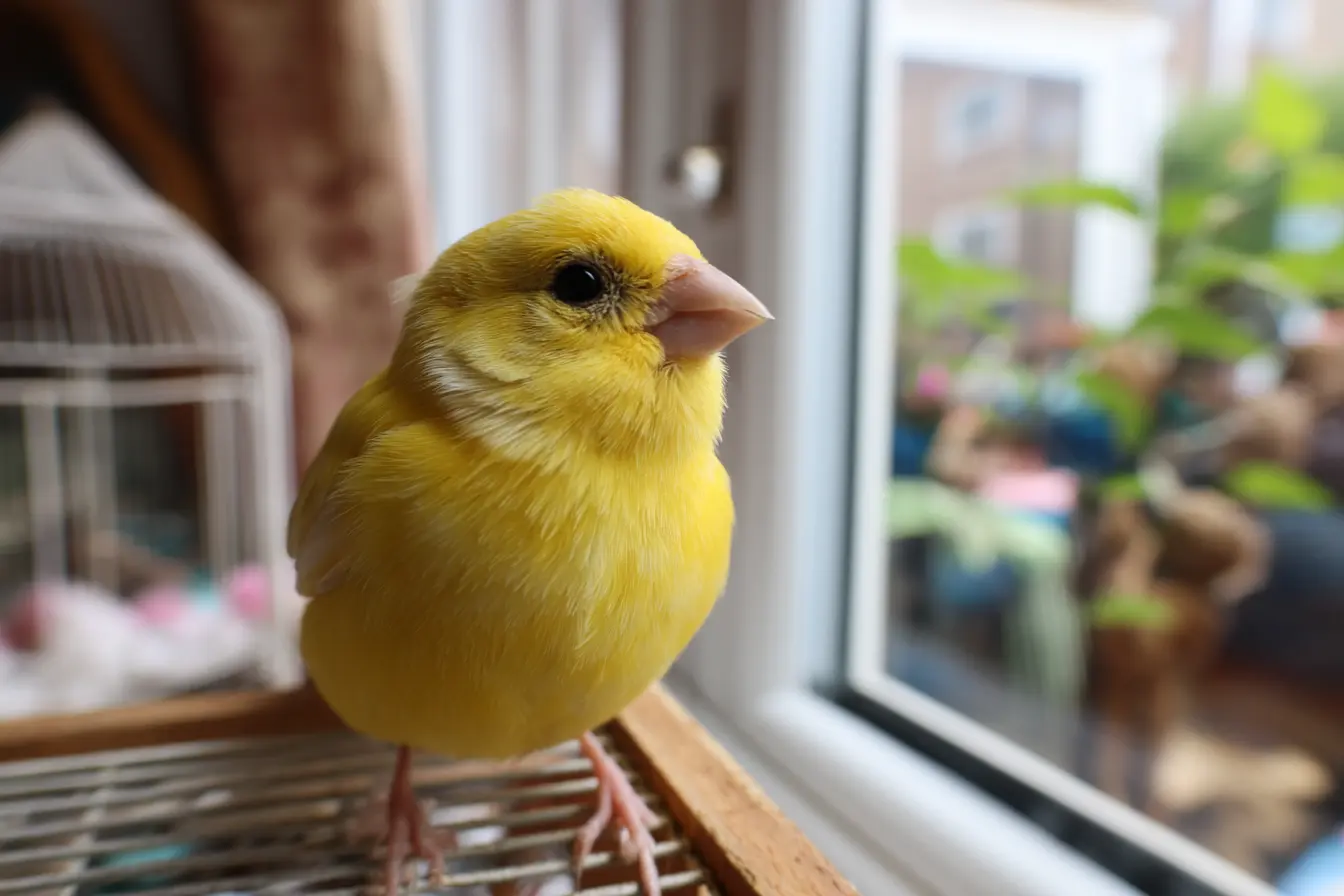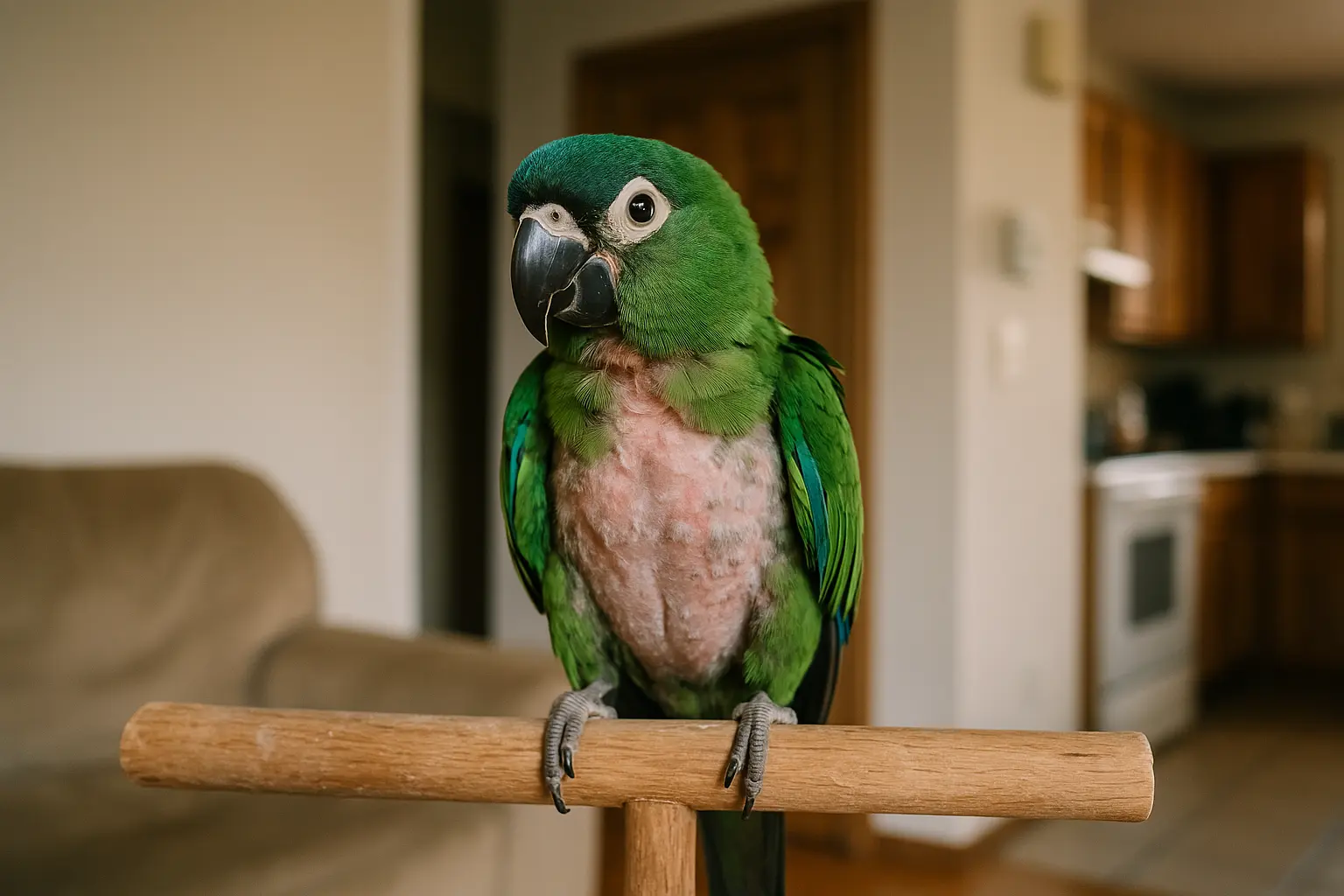
Mites and Lice in Pet Birds: Identification, Treatment, and Prevention
Mites and lice are common external parasites that can infest pet birds, causing discomfort, feather damage, and even severe health issues if left untreated. These parasites feed on blood, feathers, or skin, leading to irritation, anaemia, and secondary infections. Understanding how to identify, treat, and prevent mite and lice infestations is essential for maintaining a healthy and happy bird.
Types of Mites and Lice in Pet Birds
Different species of mites and lice affect birds in various ways. The most common ones seen in pet birds include:
Red Mites (Dermanyssus gallinae)
- Nocturnal parasites that feed on blood while birds sleep.
- Hide in cage crevices during the day, making them difficult to detect.
- Cause restlessness, feather plucking, weight loss, and anaemia.
- Heavy infestations can be life-threatening.
Scaly Face and Leg Mites (Knemidokoptes pilae)
- Burrow into the skin around the beak, eyes, and legs, causing crusty, scaly growths.
- Common in budgerigars, canaries, and finches.
- Can lead to beak deformities and difficulty eating if untreated.
Air Sac Mites (Sternostoma tracheacolum)
- Infest the respiratory system, causing wheezing, coughing, and difficulty breathing.
- Particularly problematic in canaries, finches, and Gouldian finches.
- Severe cases can lead to respiratory distress and death.
Feather Mites (Proctophyllodes spp. and Syringophilus spp.)
- Live on feathers, feeding on keratin or feather oils.
- Cause feather damage, excessive preening, and bald patches.
- Can spread through close contact between birds.
Lice (Menacanthus spp. and Columbicola spp.)
- Chewing parasites that feed on skin and feather debris.
- Cause irritation, restlessness, and excessive scratching.
- More common in outdoor aviary birds but can affect pet birds.
Signs of Mite and Lice Infestation
Mite and lice infestations may not always be obvious, but common symptoms include:
- Excessive scratching and preening
- Feather loss or damage
- Restlessness, especially at night (red mites)
- Scaly crusts on the beak, legs, or around the eyes (scaly face mites)
- Laboured breathing or wheezing (air sac mites)
- Pale combs or wattles, weakness, and weight loss (severe infestations)
- Tiny moving specks in feathers, around the vent, or in the cage
Regular health checks can help detect parasites early before they cause severe discomfort or illness.
Diagnosing Mites and Lice
An avian vet can diagnose mite and lice infestations through:
- Visual examination – Checking feathers, skin, beak, and legs for visible parasites.
- Microscopic analysis – Identifying mites or lice from feather and skin scrapings.
- Respiratory assessments – Using endoscopy or swabs to diagnose air sac mites.
If you suspect your bird has mites or lice, seek veterinary advice for a proper diagnosis and treatment plan.
Treating Mites and Lice in Pet Birds
Once an infestation is confirmed, treatment should be started immediately.
Topical Treatments
- Ivermectin – A commonly used antiparasitic medication applied as a drop on the skin or given orally. Effective against most mites.
- Pyrethrin-based sprays – Used for feather mites and lice but should be applied with care.
- Moxidectin – Often used for air sac mites and other internal parasites.
Environmental Treatment
- Deep-cleaning the cage – Remove all bedding, perches, and toys; clean with a bird-safe disinfectant.
- Heat treatment – Mites, especially red mites, die at high temperatures. Washing accessories with hot water or using a steam cleaner can help.
- Replacing wooden perches – Some mites hide in porous surfaces; switching to plastic or metal perches can reduce infestation risks.
- Diatomaceous earth – A natural powder that dehydrates and kills external parasites; can be dusted around the cage (not directly on birds).
Supportive Care
- Ensuring proper nutrition – A well-balanced diet strengthens a bird’s immune system, helping it recover faster.
- Providing a stress-free environment – Reducing stressors, such as excessive handling or loud noises, aids recovery.
- Monitoring for secondary infections – Birds with severe infestations may develop bacterial or fungal infections that require additional treatment.
Preventing Mites and Lice
Prevention is the best approach to keeping your bird parasite-free.
Regular Health Checks
- Examine your bird’s feathers, skin, and beak frequently for early signs of mites or lice.
- Weigh your bird weekly to monitor for unexplained weight loss, which can indicate an infestation.
Proper Cage Hygiene
- Clean cages, perches, and toys regularly with bird-safe disinfectants.
- Change food and water daily to prevent contamination.
- Avoid overcrowding birds, as close contact increases the risk of parasite spread.
Quarantine New Birds
- Keep new birds in quarantine for at least 30 days before introducing them to others.
- Observe for any signs of parasites or illness during this period.
Control Wild Bird Exposure
- Avoid placing your bird’s cage near open windows where wild birds might introduce parasites.
- If keeping birds in outdoor aviaries, use fine mesh to prevent access to wild birds.
Use Preventative Treatments
- Some bird owners and breeders use low-dose ivermectin or moxidectin preventatively under vet supervision.
- Regular mite checks and dust baths (for birds that enjoy them) can help prevent infestations.
Are Mites and Lice Harmful to Humans?
Most mites and lice that infest birds are species-specific and do not live on humans. However, red mites may bite humans if their preferred host is unavailable, causing itching and irritation. Keeping the bird’s environment clean and using proper handling hygiene reduces the risk of human exposure.
When to See an Avian Vet
Seek veterinary attention if:
- Your bird is excessively scratching, plucking, or showing signs of discomfort.
- There are visible signs of mites, lice, or crusty growths.
- Your bird is losing weight, lethargic, or showing respiratory distress.
- Over-the-counter treatments are not working or symptoms persist.
An avian vet can provide the correct diagnosis and prescribe effective treatment tailored to your bird’s species and condition.
Final Thoughts
Mites and lice are common yet manageable parasites in pet birds. Early detection, proper treatment, and good husbandry practices can keep infestations under control and ensure your bird remains healthy and comfortable.
By maintaining regular hygiene, scheduling routine health checks, and seeking prompt veterinary care when needed, bird owners can protect their feathered companions from the discomfort and risks associated with mites and lice.
Related Vets
Vets near you
Speciality vets
- Aquatics vet specialists
- Birds vet specialists
- Camelids vet specialists
- Cats vet specialists
- Cattle vet specialists
- Deer vet specialists
- Dogs vet specialists
- Equines vet specialists
- Exotic vet specialists
- Goats vet specialists
- Pigs vet specialists
- Poultry vet specialists
- Sheep vet specialists
- Small Mammals vet specialists
- Wild vet specialists










